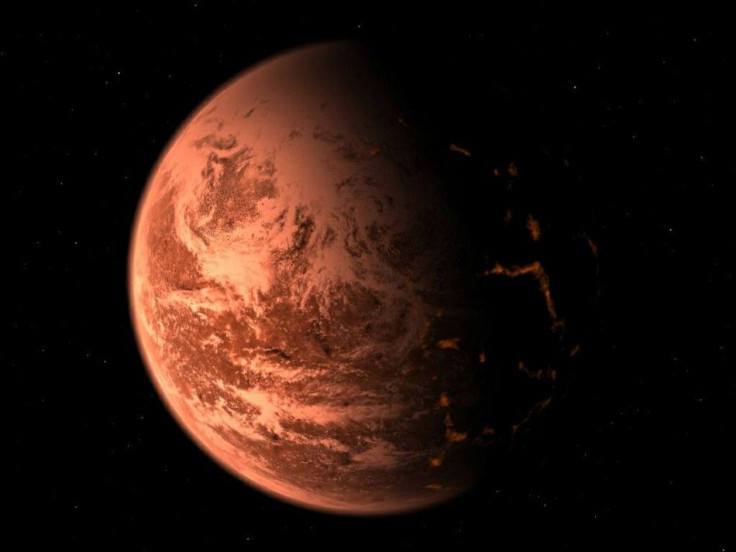Venus Ozone Layer Spotted - Can the Planet Support Life?

The European Space Agency's (ESA) Venus Express spacecraft has identified a thin layer of ozone surrounding the planet Venus, raising questions once again as to whether the Morning Star could possibly be harboring life on its rocky surface.
The layer of gas was detected when the spacecraft attempted to focus on stars beyond the planet and noticed that those appearing just adjacent to Venus were dimmer and fainter than those that lay beyond its immediate vicinity. Researchers have since deduced that the dimmer stars were being viewed through the Venusian atmosphere, which was absorbing some of their ultraviolet light. The ozone layer is found about 100 kilometers, or 62 miles, above Venus' surface - about four times higher in the atmosphere than is Earth's - and is between a hundred to a thousand times less dense.
According to the ESA, the Venus Express made the discovery by using an instrument known as SPICAV (Ultraviolet and Infrared Atmospheric Spectrometer), which looks at atmospheric gases and identifies them by the distinctive way each absorbs light at specific wavelengths.
The spectral signature of the ozone was what gave it away, said Franck Montmessin of the LATMOS atmospheric research center in France and lead author of the study identifying the atmospheric molecules. The spectral signature of ozone, a distinctive absorption band at [ultraviolet] wavelengths, was rather pronounced and we could clearly discern it in our plots with the naked eye, said Dr. Montmessin speaking to ICARUS, the official publication of the Division for Planetary Sciences of the American Astronomical Society at Cornell University.
On Earth, the ozone layer was initially the result of oxygen being produced by prehistoric microbes as a waste product 2.4 billion years ago and continues to be replenished by microbes and oxygen-emitting plant life. Ozone, whose molecules are comprised of three oxygen atoms, had previously only been detected in the atmospheres of Earth and Mars and had been thought of as a possible indicator of life. However, the modest concentration indicates that Venus' ozone layer is most likely not a biological product. According to ESA, astrobiologists theorize that a planet's ozone concentration must be 20% of Earth's value before life should be considered as a cause. The ozone found in Mars' atmosphere, for example, has not been generated by life, but is instead the result of sunlight breaking up carbon dioxide molecules; the Venusian ozone is likely to have a similar type of origin.
Though the new discovery does not immediately indicate life on Venus, it has important ramifications for the continued study of astrobiology. Håkan Svedhem, ESA Project Scientist for the Venus Express mission asserts that these findings greatly expand our understanding of the chemistry of Venus' atmosphere. Beyond that, Dr. Svedham says, it is yet more evidence of the fundamental similarity between the rocky planets, and shows the importance of studying Venus to understand them all.
© Copyright IBTimes 2024. All rights reserved.





















